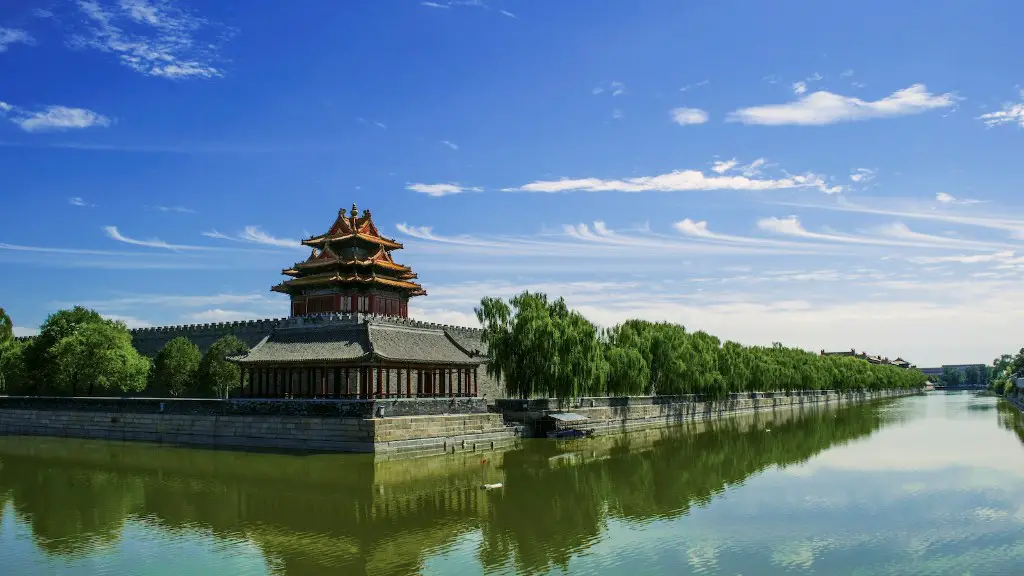How do you say Yangtze River in Chinese?
For more than 3,000 miles, the Yangtze River has become a lifeline for people in central and eastern China. It has been a major source of food and transport for centuries. The Yangtze River is known as the “Long River” and is arguably the most important river in the country.
It’s no surprise, then, that many people who are familiar with this important course of water have asked the question: how do you say Yangtze River in Chinese?
The Yangtze River’s Chinese name is 长江 (Pinyin: Cháng Jiāng). The word 长 (cháng) literally means ‘long’, and 江 (jiāng) is the character used to refer to a river. So, literally, 长江 means “Long River.”
According to archeological evidence, the Yangtze River has been playing an important role in Chinese history since it was discovered during the Paleolithic Age 26,000 years ago. Throughout history, it has been a major source of drinking water, transportation, and of food. People in nearby areas have also built settlements and towns along the river banks.
To this day, the Yangtze River continues to be an important resource for both people and businesses. Over 400 million people live in the surrounding area, and the river itself is used for transportation, agriculture, fishing, and electricity generation. From the agriculture and fishing, the people living along the Yangtze River have developed unique regional cuisine. In addition, large cities such as Shanghai and Wuhan have grown up along this river.
The importance of the Yangtze River is undeniable. Not only does it provide a lifeline for the people and businesses in this central and eastern China region, but it is also a source of cultural and historic relevance to the people of China.
Environmental Impact
The Yangtze River has been increasingly polluted in recent decades due to uncontrolled industrial discharge, agricultural runoff and untreated domestic wastewater. This pollution has severely compromised the ecological health of the river, causing massive fish-kills and threatening drinking water sources.
In addition, the river has had a number of hydrological issues due to the Three Gorges Dam, which was completed in 2006. The dam has caused significant changes in the water flow of the Yangtze River, leading to an increase in sediment deposit and an increase in the turbidity of the river. This has led to warnings about potential long-term environmental changes in the area.
Since the Three Gorges Dam’s completion in 2006, there has been a growing environmental movement in China that aims to reduce the environmental impact of the Yangtze River and restore the river’s ecological health. This movement has gained recognition from the Chinese government, resulting in the launch of a number of initiatives, such as the Yangtze River Protection Action Plan, which aims to reduce the pollution in the river.
In addition, the Chinese government has also proposed the Yangtze River Economic Belt, which aims to develop the river’s economic potential and ensure the sustainable development of the region. This plan includes new infrastructure investments, the development of industry clusters in certain strategic areas and environmental protection measures.
Economic Importance
The Yangtze River is arguably the lifeblood of much of Central and Eastern China’s economy. It is estimated that 20% of China’s economy is connected to the river, with a wide range of industries relying on the river for transport, water supply and energy. In addition, the Yangtze River has also become an important source of tourism revenue.
There are more than 60 different cities that are located along the Yangtze River, with combined GDP of over US$2 trillion. These cities include Shanghai, which is the most populous city in China, and Wuhan, which is the capital of Hubei province and a major economic center.
The importance of the Yangtze River to China’s economy cannot be overstated. Without the river, many of the industries in Central and Eastern China would not be able to function. In addition, it provides a crucial link between the cities along the river, allowing for people and goods to move easily.
The Yangtze River has been a major part of China’s history and culture for centuries, and its importance to the Chinese economy is just as significant. From providing a lifeline for those in Central and Eastern China to being a major source of tourism and economic activity, the Yangtze River is vital to the country’s success.
Ecological Significance
The Yangtze River is home to an incredible array of species, and is an important area of biological diversity. The river’s diverse ecosystems offer a refuge and habitat to a wide range of species, including several species of fish, mammals, amphibians and birds.
The Yangtze River is home to the world’s only wild population of Alligator sinensis (Chinese alligator). This species, which is listed by the IUCN as critically endangered, is on the verge of extinction, and the Yangtze River is one of its last remaining habitats.
In addition, the Yangtze River also has a number of protected areas, such as the Three Gorges National Park, which was established in 1992 and covers an area of more than 10,000 square kilometers. This area is home to a wide range of species, including the Chinese alligator, Chinese sturgeon, finless porpoise and Yangtze finless porpoise.
The importance of the Yangtze River to China’s biodiversity cannot be overstated. It provides a crucial refuge to some of the most endangered species on the planet, and is an important area of biological diversity. Without the Yangtze River, many of these species would be lost forever.
Political Significance
The Yangtze River has played a significant role in the politics of China. Historically, it was used as the demarcation line between the north and south of the country, and it was also the boundary between two of the most powerful Chinese dynasties: the Qin and the Han.
Today, the Yangtze River is still a powerful symbol in Chinese politics. With its long history and importance to people in China, the Yangtze River has become a symbol of Chinese resilience and pride.
In addition, the Yangtze River has also become an important political tool for the Chinese government. This has been most evident with the construction of the Three Gorges Dam, which has been the largest public works project in modern Chinese history. This dam is a symbol of achievement for the Chinese government, and is seen as an example of their ability to use the river as a tool for economic and political development.
The Yangtze River is an important symbol of resilience and achievement for China. It has been a vital political tool for the Chinese government, and is also a symbol of Chinese pride.
Conclusion
The Yangtze River has been an important part of Chinese culture and history for centuries. Its importance to the people of China cannot be overstated, and it continues to be an important source of food, transport, and economic activity. In addition, it is also home to an incredible array of species, and is an important area of biological diversity.
The Yangtze River is known in Chinese as 长江 (Pinyin: Cháng Jiāng), which translates as “Long River.” For centuries, it has been an important resource for people in Central and Eastern China, and it remains an important symbol of resilience and pride.





